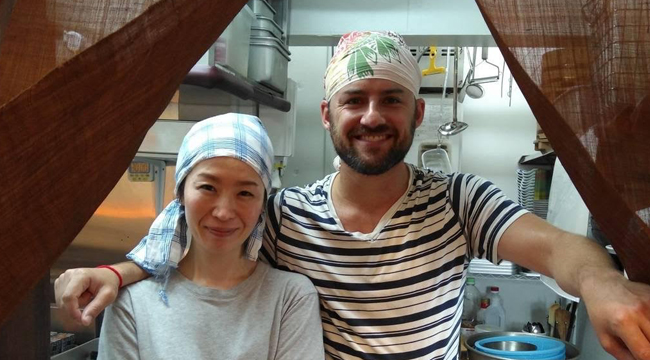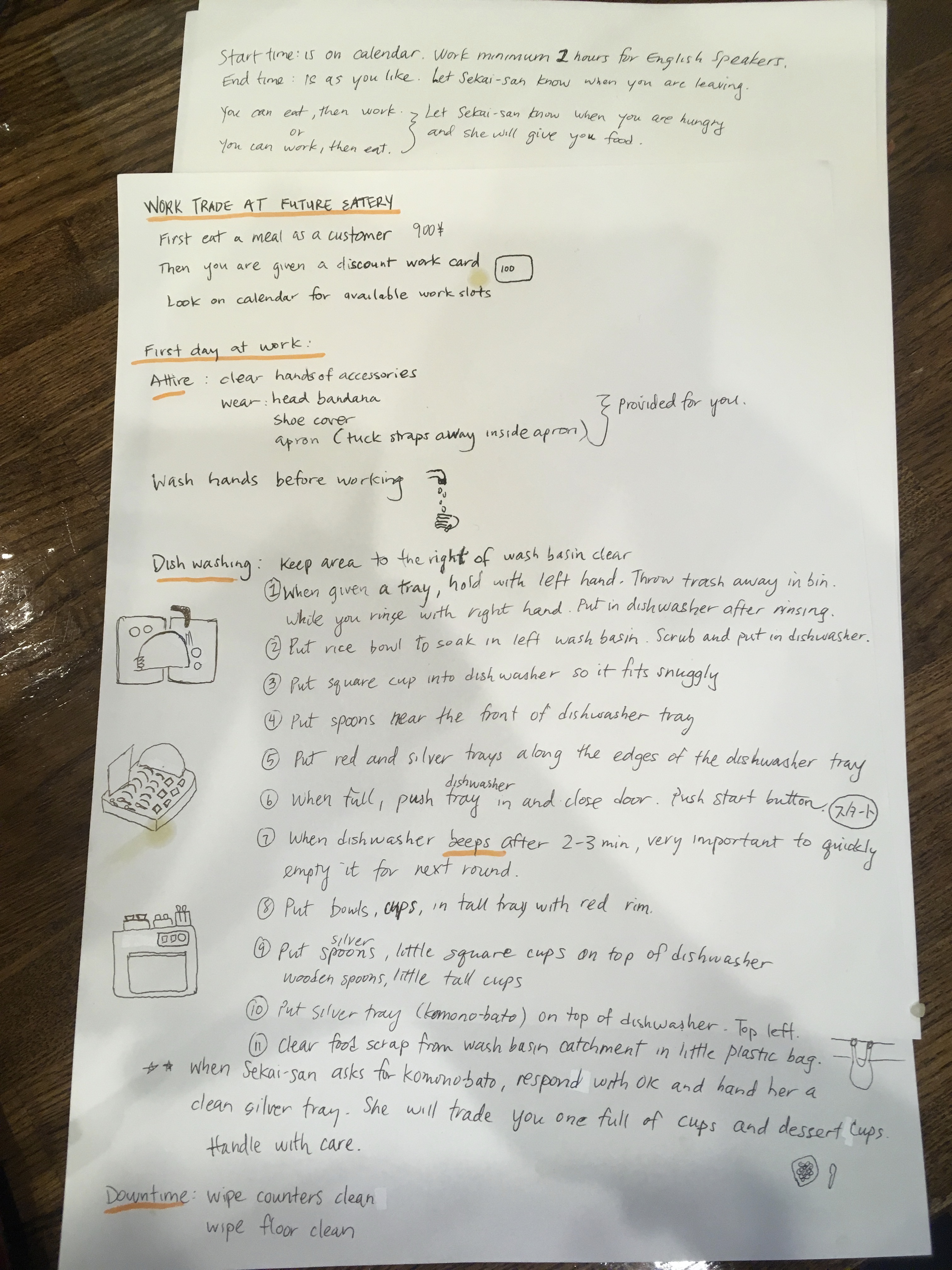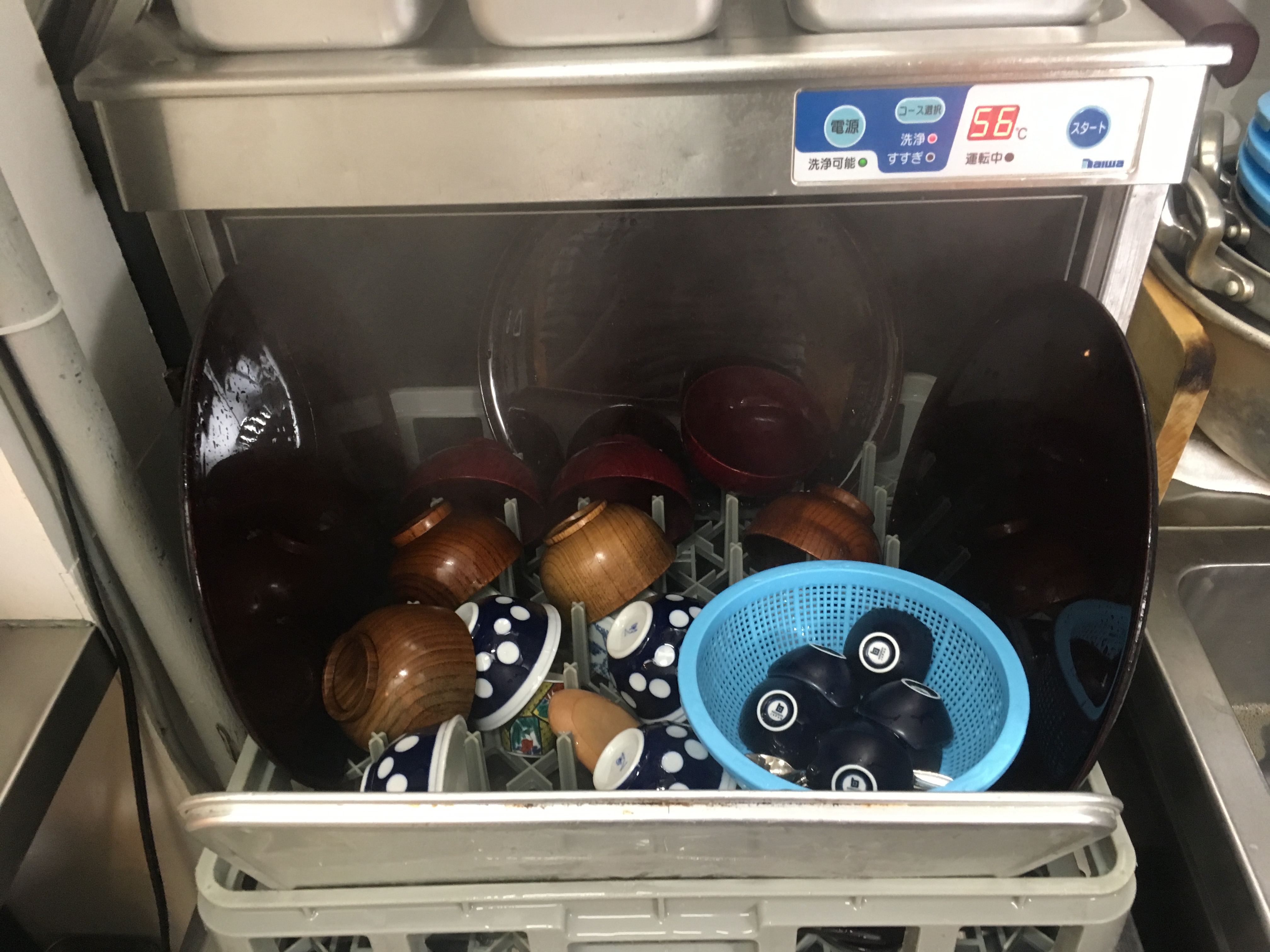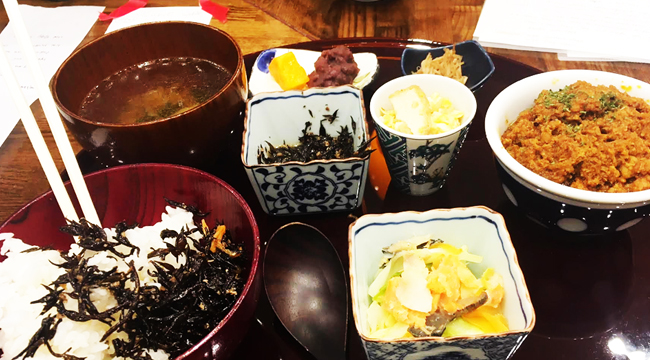
Locating Mirai Shokudo (Future Restaurant) in Tokyo’s Jimbocho district was proving challenging. On a tip from renowned director Cary Fukunaga — a trusted ally since my time as second assistant director on Beasts of No Nation — I’d set out to discover the eatery in downtown Tokyo where a hungry diner could work in exchange for a meal. The article Cary forwarded had suggested the deal was fairly straightforward: 50 minutes of service allocates one hearty meal to the worker.
The reality was far more involved and dynamic. It was also more gratifying.
Upon inspection of the exterior cluster of signs at the approximate address, I found Japanese characters that suggested I’d find my destination within, located one floor below street level near the Jimbocho stop on the Mita and Shinjuku Lines. Inside, Sekai Kobayashi — the diminutive but commanding proprietor of the restaurant — greeted me. The dining area swirled around her post in the central preparation station.
Sekai quickly directed me to Sasanna Yee, an English speaking Chinese-American. Sasanna had completed her shift and was compiling “house rules” for English speakers. Soon after, I was served my meal – everyone eats the same daily menu – before Sasanna walked me through the ground rules for foreigners, as she understood them (it was her first shift).
Over 500 people have opted to work for their meals at Mirai Shokudo, but Sasanna and I were two of the first English speakers. The current rules are as follows:
- First one must be a customer. A meal costs ¥900 (about $8.25). Sasanna had eaten the day previous and started her shift.
- After expressing interest in working, one can sign up for a shift. Shifts for foreigners last about 1.5 hours. There’s a calendar on the website – in Japanese.
- Shifts consist of doing the dishes and cleaning meticulously. The process of dishwashing was diligently scrolled in the English manual Sasanna had created.

As I ate, I began to notice the particulars of the restaurant. In a small kitchen attached to the dining room, two workers cooked and cleaned. Sekai — known as Sekai-san or Ms. Mirai — has copies of her published restaurant concept in versions both Chinese and Japanese along the rear wall. Hungry business types filed in and out. The operation was efficient, unhurried and produced quick, delicious, straightforward results. Miso, rice, salad with Salmon and a marinated pork/chicken mix are all included in the meal.
By fortune alone, there was a shift available the following day (the entire next week was booked). Arriving the next morning at about 11 for my 11:40 shift, I was adequately manic on nerves and coffee.* The first thing a volunteer does is dress appropriately in the apron, bandana and shoe covers, which are all provided. Rings, jewelry, and watches are set aside as hands are washed.
A veteran of washing dishes at restaurant kitchens in high school and college, I consider the practice therapy. My father, when asked by my brother and I to invest in a dishwasher, used to reply: “Why would I get one when I have already have two.” Never before this, though, have I adhered to the standards expected in Sekai-san’s cleaning station. Washers were held to far higher levels of quality control than my dad demanded. Though it took a minute to subdue my improvisational (Italian) nature, when comfortable with the rhythm of the process, I fell into the unmistakable groove of back-of-house work.
*Tokyo has an amazing coffee culture. There’s a wonderful café, called Glitch, several blocks away from Mirai Shokudo. Pre-shift cappuccino are highly suggested.
Volunteers are expected to observe the prescribed process with faithful dedication. There were some bumps in my journey. Several times, I was caught holding the trays with the wrong hand (“hold with the left, clear with the right,” is the feng shui of the modest sink area). Later, in my own world among the unclean miso bowls, I unwittingly began softly humming “Candy Girl.” Perhaps my hosts are not fans of New Edition’s early catalogue, because upon turning around to grab another tray of plates, my two horrified colleagues politely signaled to discontinue my performance –- customers understandably expect a tranquil dining area.

An unexpected element of service at Mirai Shokudo is the welcoming of English speaking guests. Sekai-san speaks enough English to communicate – and I expect a lot more than she lets on – but when foreign guests arrive, I was made ambassador to the restaurant. I had the pleasure of welcoming a gentleman from Hong Kong who had also read about the restaurant concept and wanted to see for himself. This exchange was deeply rewarding, as was Sekai-san’s approval of my effort.
When my shift was complete, roughly two hours in, I gave my discount coupon as a gift to Toshi, my friend/translator/AirBNB host. We ate together and added to the English users manual that Sasanna had initiated the day previous. Sekai-san also asked that a work journal be started to express any notes, ideas, suggestions and local tourism tips for future foreign language volunteers.
In the age of interactive tourism, we tend to look for value and meaning in our experiences. As peer-to-peer trip sharing and crowd sourced resources become more commonplace, guided tours, package deals and itinerary driven travel trips are less attractive. For many intrepid travelers, it is more interesting to see how a local kitchen is arranged than to stand in line for an overly photographed monument.
For my part, I’ll remember my shift at the restaurant as a chance to be completely immersed in another culture — a task not easily achieved in the heart of an internationally friendly city such as Tokyo. If you have a couple days in Tokyo I’d urge you to go buy a meal, then work for a second one. If you do, please tell Ms. Mirai Marco-san says “kon’nichiwa and arigatogozaimas.”







